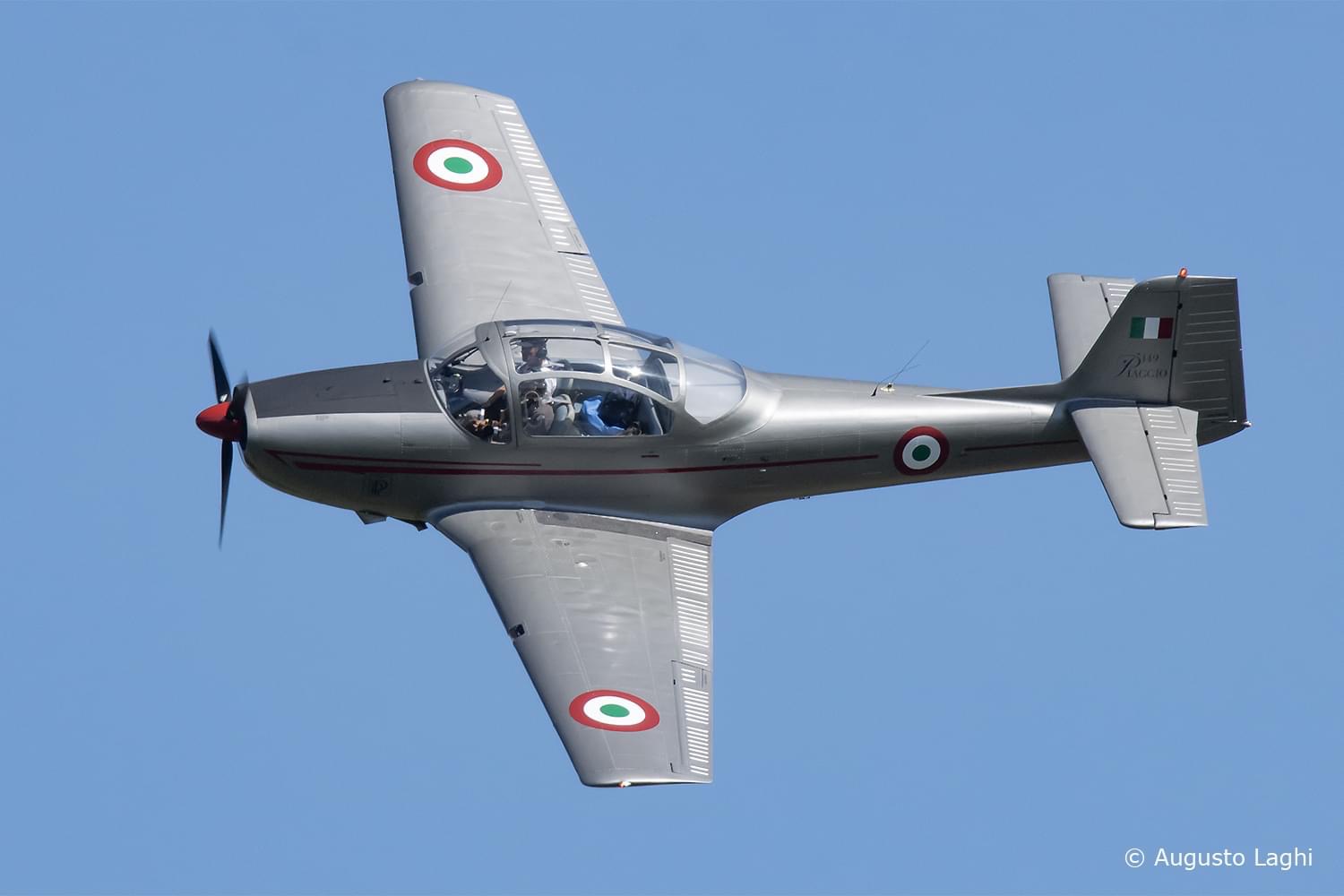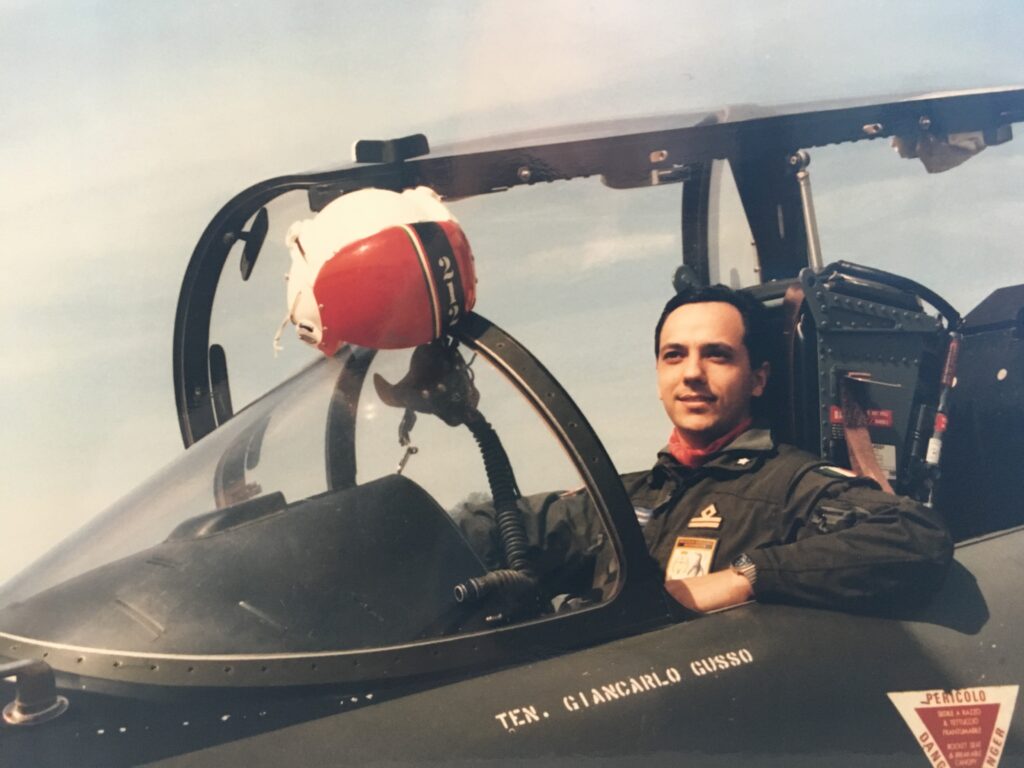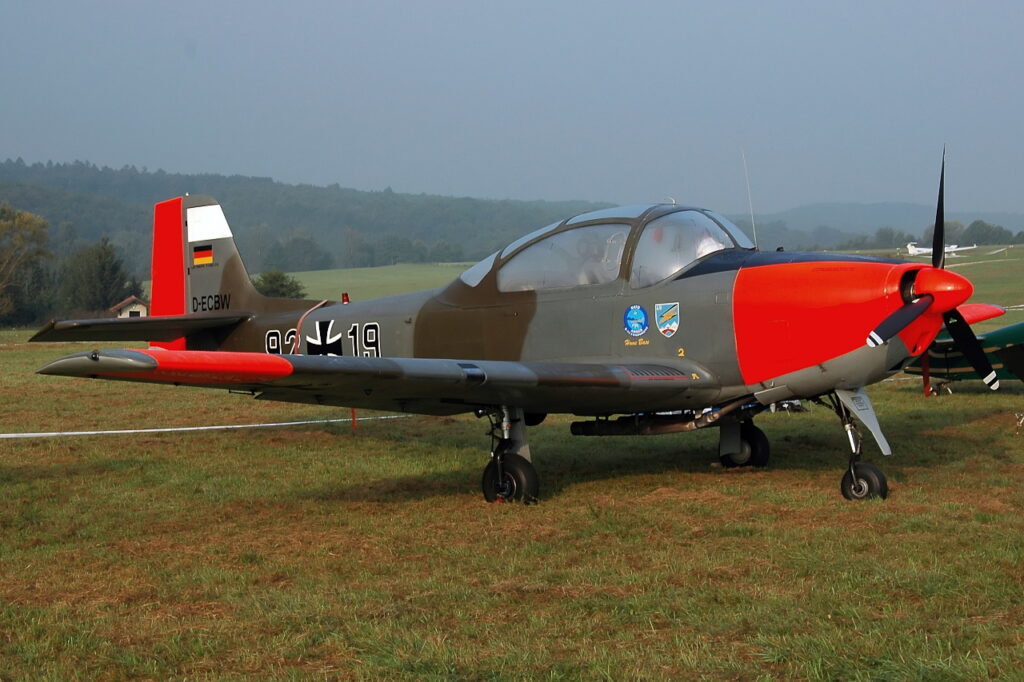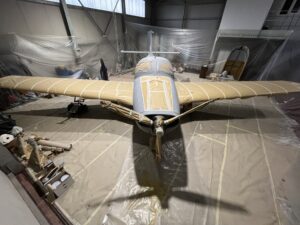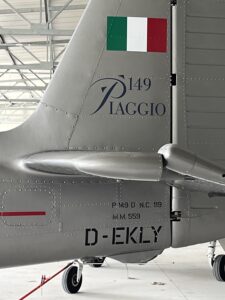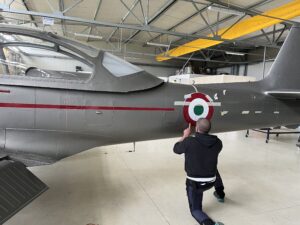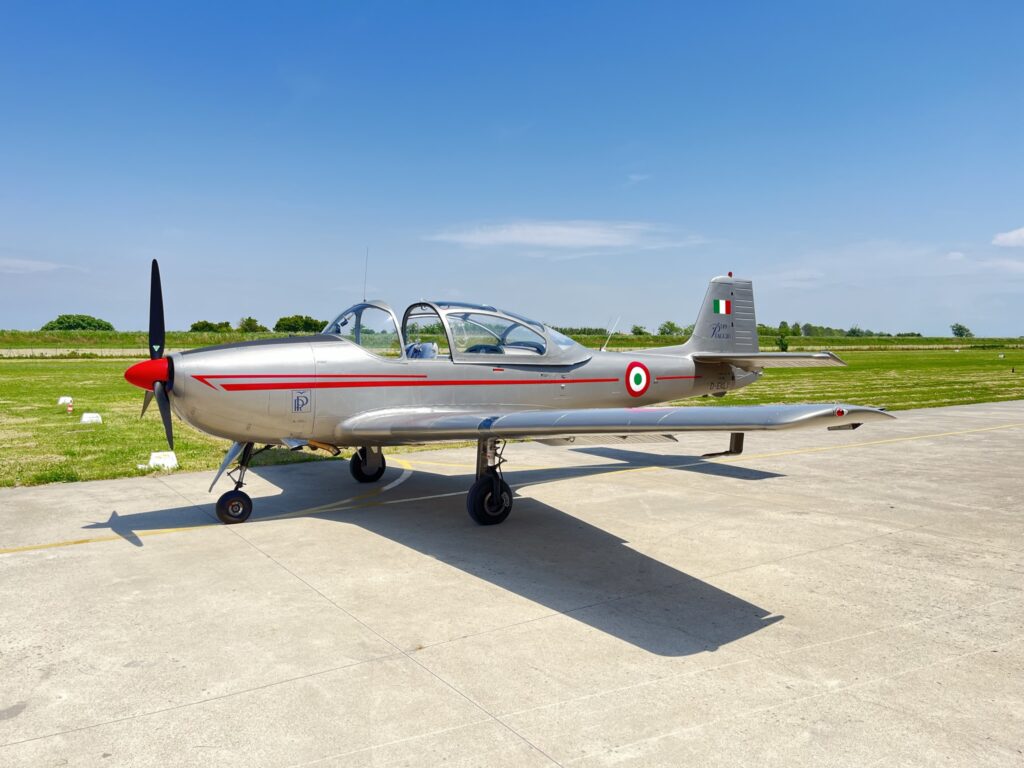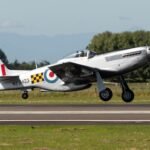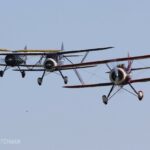After many years of military and civilian professional flying, Captain Giancarlo Gusso wanted to own an airplane for himself to enjoy flying in freedom, whenever and wherever he wanted, and without the rules and timetables imposed by his professional flying career.
Captain Gusso, known in the Italian Vintage Aviation circles as “Gux,” was a fighter pilot in the Italian Air Force. He flew MB-339, G-91T, and AMX, and served in the Aeronautica Militare for a total of 9 years. In 1987, he was hired by Alitalia as a First Officer on the venerable MD-80. When flying for the now-defunct Alitalia, Captain Gusso flew MD-11, Airbus A320, and Boeing 777, until he finally retired in January of 2023 after almost 20,000 hours of flight time.
After owning a vintage SAAB 91 for a few years, his next airplane had to meet a series of criteria. It had to check all the boxes. It had to be historic, ex-military, inexpensive to operate, perhaps aerobatic (“because I know myself and sooner or later I would have liked to observe the earth upside down”), and possibly with more than two seats.
With these criteria, the shortlist of candidates was limited to very few airplanes. After conducting online research, his first choice was a Saab 91D, ex-Austrian Air Force. The Saab fit the bill but had a flaw: it was not an Italian aircraft. Captain Gusso told us: “The circle narrowed further and the search for the definitive aircraft was gradually taking shape. Ex-military, acrobatic, historical, 4-seater.All of a sudden I had found it … a Piaggio P149D!”
It is interesting to note that the Italian Air Force ordered the Piaggio P.148, a two-seater trainer, for only its liaison and logistical needs. It was preferred to a troubled Aermacchi by purchasing the M.416. So, MM559 was the only Piaggio P.149 that ever served in the Italian Air Force.
Captain Gusso finally found the airplane that checked all the boxes in July of 2021, but it, too, had a major flaw: an almost unwatchable civilian livery. Captain Gusso told us: “I evaluated a series of proposals from aircraft painting companies, but they were definitely too expensive for my pocket. I evaluated others abroad but due to logistical travel and language barrier problems, I had to give up. So I started to entertain the idea of doing things on my own as soon as I retired.” The Captain started looking for a hangar near Caorle (Venice), his hometown, where he could do the long cosmetic operation without having to dismantle the plane. After a tedious search, he eventually found one.
Thanks to the help of the curator of the Guardia di Finanza Museum in Pratica di Mare, Captain Gusso was able to acquire technical documentation for the Federal Standard colors used in the restoration of the museum’s Beechcraft C-45, which was from the same period as the Piaggio. That meant the same colors were also applicable to Captain Gusso’s Piaggio.
In addition, an expert painter and representative of Lechler Colours, an Italian paint manufacturer, offered to help the Captain with the painting scheme and process. The choice for the paint scheme was actually very simple as there was only one Piaggio P.149 that served with the Italian Air Force — serial number MM559. This Piaggio was used by the Italian military attaché in Bonn in the early ‘60s, so the choice obviously went to this aircraft. Captain Gusso also told us: “I started looking for paint stripping products since I absolutely didn’t want to disassemble the wings or the flight controls. In particular, I was looking for a gel product that could also be applied on the lower surfaces. For the next three months, I spent most of my time in overalls, glasses, masks, rubber gloves, and with a spatula and rolls of paper. This first phase was followed by the orbital sander, then a brass brush to clean the old paint around the rivets. I spent about 8-10 hours each day of continuous work until the plane slowly changed its appearance … finally showing its original primer layer.”
Eventually, the airplane was fully prepped for the paint booth; however, there was no paint booth available nearby. Captain Gusso told us, “We built a beautiful 15 x 15 x 5-meter booth inside the hangar using wood and plastic sheets!” After four months of work, the Piaggio was finally flight-ready.
The actual history of the Piaggio follows: Focke Wulf Piaggio 149D (Deutschland), serial number 119 FWP was built by Bremen and Focke Wulf under the Rinaldo Piaggio Aviazione license in March of 1960. It served as a trainer in the Luftwaffe at the FFB Fürstenfeldbruck Air Base (Bavaria) until 1993, with the following fuselage numbers: 90+99, AS+461, part of WaffenSchule 49 (WaSch49) flight group of the Fluglergruppe Fürstenfeldgruppe. Due to age reasons, it was later decommissioned and registered as D-EKLY and owned by three partners from Erlangen (north of Nuremberg); ownership was reduced to one, who upon his death gave instructions to sell it to his daughter.
The first official flight in the new MM559 livery was at the Aquila Air Show in May of this year. Captain Gusso had the honor to fly in the Italian Air Force 100th Anniversary Air Show at Pratica di Mare in June of this year, as well as participate in the 2023 Royal International Air Tattoo with the Italian contingent.
The airplane that “checked all the boxes” makes Captain Gusso a very proud owner: “Now I look at my Piaggio satisfied. I admire it. The Piaggio is exactly the plane I wanted, and I feel like a father in love with his newborn son!”







